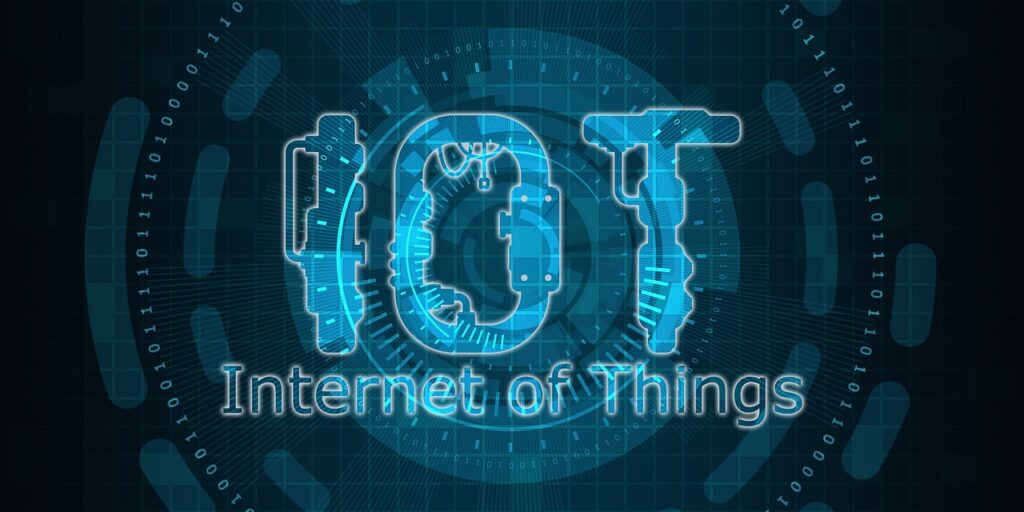I. Introduction to Internet of Things (IoT)
The Internet of Things, or IoT, is a revolutionary concept that refers to the interconnection of various devices through the internet, enabling seamless data exchange and communication. From smart homes to industrial automation, IoT has the potential to transform the way we live and work.
II. Applications of IoT
IoT finds applications in numerous domains, including:
Supply Chain Management: IoT enables real-time tracking of goods, optimizing inventory management and reducing logistics costs.
Industrial Monitoring: IoT sensors and devices monitor machinery performance, facilitating predictive maintenance and improving productivity.
Healthcare: IoT devices enable remote patient monitoring, improving healthcare outcomes and reducing hospital readmissions.
Smart Homes: IoT devices automate and control home functions, enhancing convenience, security, and energy efficiency.
Agriculture: IoT solutions provide real-time data on soil moisture, crop health, and environmental conditions, enabling precision farming techniques.
III. Benefits and Challenges of IoT
The adoption of IoT offers several benefits, such as:
- Improved Efficiency: IoT devices automate processes, leading to increased operational efficiency and productivity.
- Enhanced Decision Making: Real-time data collected by IoT devices enables data-driven decision making and predictive analytics.
- Cost Savings: IoT implementation can result in cost savings through optimized resource utilization and reduced maintenance expenses.
However, there are challenges to consider, including:
- Security and Privacy: IoT devices are vulnerable to cyber-attacks, necessitating robust security measures.
- Interoperability: Ensuring compatibility and interoperability among different IoT devices and platforms can be complex.
- Scalability: As IoT networks expand, scalability becomes crucial to handle the growing number of connected devices.
IV. IoT Security
Ensuring the security of IoT devices and networks is paramount. Some essential security measures include:
Secure Device Authentication: Use strong passwords, encryption, and two-factor authentication to protect device access.
Network Segmentation: Isolate IoT devices on separate networks to limit potential attack vectors.
Regular Software Updates: Keep IoT devices updated with the latest firmware to patch security vulnerabilities.
Data Encryption: Encrypt data both in transit and at rest to protect it from unauthorized access.
Blockchain Integration: Leverage blockchain technology to enhance the security and transparency of IoT data.
V. Implementing IoT Solutions
To implement IoT successfully, follow these steps:
Define Objectives: Identify the specific goals and outcomes you want to achieve through IoT implementation.
Assess Infrastructure: Evaluate your existing network infrastructure and ensure it can support IoT devices and data transmission.
Choose the Right Devices: Select IoT devices that align with your objectives and have the required features and capabilities.
Connectivity Options: Determine the most suitable connectivity options, such as Wi-Fi, Bluetooth, or cellular networks.
Data Management: Develop a robust data management strategy to handle the vast amounts of data generated by IoT devices.
Integration and Interoperability: Ensure compatibility and seamless integration among various IoT devices and systems.
Test and Monitor: Thoroughly test the IoT solution before deployment and establish monitoring mechanisms to detect issues and ensure smooth operation.
VI. IoT in Business
IoT is transforming business operations by enabling:
Supply Chain Optimization: Real-time tracking and monitoring of goods, enhancing inventory management and logistics.
Predictive Maintenance: Proactive monitoring of machinery, minimizing downtime and reducing maintenance costs.
Customer Experience Enhancement: IoT-enabled devices offer personalized experiences and improved customer interactions.
Data-Driven Insights: IoT-generated data provides valuable insights for business intelligence and informed decision making.
VII. IoT in Healthcare
IoT has revolutionized healthcare by:
- Remote Patient Monitoring: IoT devices allow continuous health monitoring, reducing hospital visits and improving patient outcomes.
- Enhanced Efficiency: Automated processes and real-time data enable streamlined operations and efficient healthcare delivery.
- Personalized Treatment: IoT facilitates personalized treatment plans and drug administration based on individual patient data.
- Telemedicine and Telehealth: IoT enables remote consultations, diagnostics, and virtual healthcare services.
VIII. IoT in Smart Homes
IoT devices bring intelligence and automation to homes by:
- Energy Efficiency: Smart thermostats, lighting systems, and energy monitors optimize energy usage and reduce utility costs.
- Home Security: IoT-based security systems provide real-time alerts, remote monitoring, and surveillance capabilities.
- Convenience and Comfort: Voice-controlled assistants and smart appliances enhance convenience and improve daily routines.
- Home Automation: IoT devices automate tasks like controlling lights, appliances, and entertainment systems for a connected living experience.
IX. IoT in Agriculture
IoT is reshaping the agriculture industry by:
- Precision Farming: IoT sensors collect data on soil moisture, temperature, and crop health, enabling precise irrigation and fertilization.
- Livestock Monitoring: IoT devices track animal health, behavior, and location, facilitating efficient farm management.
- Crop Monitoring and Yield Optimization: Real-time data on crop growth, weather conditions, and pests help optimize yield and minimize losses.
- Farm Automation: IoT-based automation systems control irrigation, greenhouse environments, and machinery, enhancing productivity and resource management.
By embracing the potential of IoT and implementing it effectively, businesses and industries can unlock new opportunities, improve efficiency, and create a connected future.
(Note: The suggested title tags and meta descriptions provided are for reference and can be further optimized based on the blog post content and SEO strategy.)

